Chicago Fire Dept. 1960 Mack Fire Engine 87 – $16000 (Big Rock, IL)
Chicago Fire Department 1960 Mack B95 Fire Engine – Engine 87. This Mack B95 was featured in a Mack magazine ad. The rig actually served the Skokie FD, ordered under specifications from Chief Warren Redick, where it retired as Reserve Engine 5. It was restored as a replica of CFD Engine 87 by a group of Chicagoland firefighters who called themselves the Engine 87 Club. After leaving the hands of the club, a former fire chief took over its restoration, installing a new exhaust and completely upgrading its electrical system. It had its starter rebuilt and choke cable replaced and she now starts up and runs like a champ. The two front tires are good cosmetically but are showing signs of need for replacement. There is a 6″ seam separation on the edge of the driver’s seat. It needs a new headliner but looks OK without one. There’s about a 6″ section of paint chipped away from one of the automatic radiator louvers. Other than that, she and her engine and undercarriage are in great shape. I don’t know the tank size or rating the pump has. A pump mechanic who inspected it says it will pump but I have not pumped with it. This truck runs on gas, has turn signals, a hydraulic braking system with a massive booster, and a great power steering system. The emergency warning equipment including the Mars DX-40, 888 and Commander siren all work well. This rig has a rich history and deserves to be seen once again in parades and at fire musters. Temporary or permanent storage is available to the buyer.
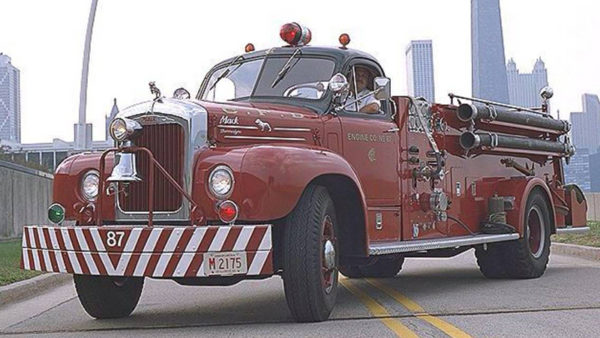
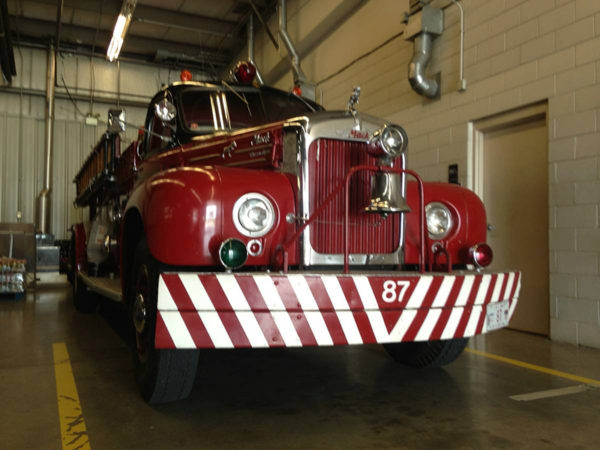
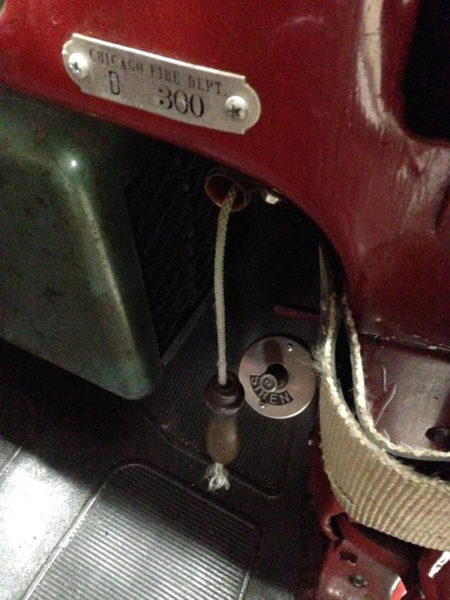
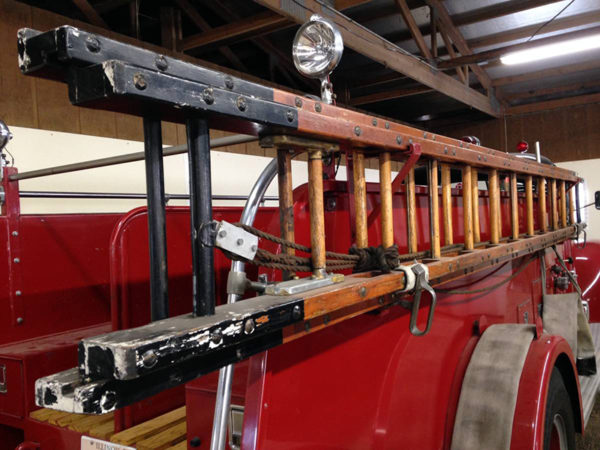
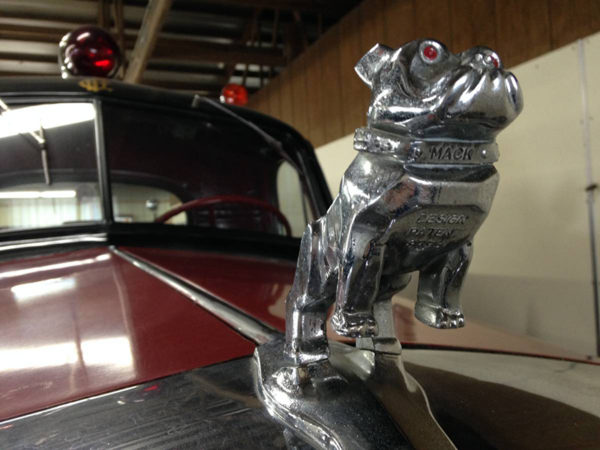


thanks Dennis and Dave



















































Pingback: Vintage fire engine for sale (more) | chicagoareafire.com
#1 by Phil Stenholm on March 24, 2017 - 11:03 PM
BILL: 6-2-5 was CFD shop built at the same time as 6-2-6 circa 1969, and it was located at the Shops. It was not in service at a firehouse at that time. I don’t know if it is the same 6-2-5 apparatus as the one that was placed into service with SS1 in 1976 or if it was a re-chassis or a completely different rig altogether. Whichever it was, 6-2-5 was not a slick factory-built “Fire Boss” like DC1, DC2, DC3, and DC4.
#2 by Bill Post on March 24, 2017 - 5:31 PM
Yes Fred M that is the 625 rig that I’m taking about.
#3 by Fred M on March 24, 2017 - 4:27 PM
Bill P….When I was riding with SS-1 circa 1977-79, we took 625 Chem when the Hendrickson rig was in “shops” and the spare went in too. Can you tell if 625 Chem (Chevy chassis) is the same as what you are referring to from the pic I posted @ FireScenes.net – SS-1 Retrospective? 625 is in the backround
#4 by Bill Post on March 24, 2017 - 2:01 PM
Phil what was 625 Dry Chemical 5 using in 1969 when they were at the shops? I remember when they were assigned at the new 3rd section of SS1 in 1976. I remember seeing it follow SS 1 and SS 1A on still alarms around the “Loop”. Their new rig at the time was smaller and different then the other Dry Chemical rigs and rear chassis had a square cabinet mounted on it which is where the main Dry Chemical canister was located in. Dispatching 625 was a case of vehicular overkill and within 2 years they were relocated to Engine 80 which is where Dry Chemical 3 also was.
By the way, Truck 56 also was equipped with an inhalator. I had heard that the local chamber of commerce had supplied it. I’m surprised that more of the outlying companie weren’t equipped with them such as Engine 119,125, 127 115 and 81 as they were all located in pretty isolated areas and they were all at one time a good distance from the nearest Squad company. You probably know that Ambulances didn’t start serving the public until 1946 and even by 1950 there were only 12 ambulances in service so the Squads still were first due the inhalator runs until in 1955. You probably also know that even that the last 3 of the Old Squads weren’t put in service until from 1946 through 1949 so even the Squad company coverage wasn’t that good either until then. I’ll never understand why the Chicago Police didn’t carry inhalators on their “Squadrols” ( police wagon vans) as the Chicago Police Wagons were used for years as the primary public ambulance service for the city. Even after the fire department started providing ambulance service for the public the Police Wagons were still being used as ambulances and would always get dispatched to inhalator runs. It’s ironic that the Police Wagons made “sick removals” from private residences but the fire department ambulances weren’t allowed to so until around 1972.
#5 by Phil Stenholm on March 24, 2017 - 10:39 AM
BILL: Meigs Field was only open from 6 AM – 10 PM, so Engine Co. 21 had no crash/rescue responsibilities overnight. Despite being located nearby, Engine Co. 21 was dispatched to the McCormick Place fire in January 1967 only after 2-1-3 (Fire Commissioner Quinn) ordered all available companies to the fire. I can just imagine the guys at Engine 21 sound asleep in quarters at Meigs Field and then getting rousted out for one of the biggest fires in Chicago history. They probably thought it was a practical joke.
Engine Co. 21 was also one of the few CFD engine or truck companies equipped with an inhalator in the 1960’s (Engine Co. 97, Engine Co. 118, and Truck Co. 45 were the other ones).
Engine Co. 21 was replaced by Dry Chemical 1 (6-2-1) in October 1967, and Engine 21’s rig (1956 Mack D-302) was transferred to Engine Co. 119. The Meigs Field firehouse was still occasionally called “Engine 21” out of habit even after Engine 21 was taken out of service, but Dry Chemical 1 normally was called “DC1” on the radio by the MFAO. DC1 would dispatch itself to calls at Meigs Field.
The 1967 GMC/Seagrave/Timco mini-pumper 6-3-4 (“Chemical 4”) was also assigned to Meigs Field (as a second rig) with DC1 for several years, and was eventually replaced in the mid-1970’s by the ex-SS1-A “big” Fog Pressure (known as 4-4-2-A when it was assigned to Meigs Field).
There were six CFD Dry Chemical rigs in service by 1969:
6-2-1 at old Engine 21 (Meigs Field)
6-2-2 at Engine 118 (Midway Airport)
6-2-3 at Engine 80 (Lake Calumet Harbor)
6-2-4 at Engine 59 (International Amphitheater), then to new Engine 79 house on Lehigh Road (Sauganash) in 1970
6-2-5 at the Shops
6-2-6 (ex-Fog Pressure 12) pulling the foam trailer at Engine 42 on Illinois Street.
The first four DC rigs were factory-built mini-pumpers (known as the “Fire Boss”) built by Fire Guard (100/175/20F with 750 lbs of dry chemicals), and the other two were ex- fog pressure rigs converted to dry chemical rigs at the CFD shops.
#6 by Bill Post on March 24, 2017 - 10:21 AM
Phil so the first house that featured the fire pole was Engine 21’s at Plymouth Ct? That really goes back.I wonder if there are any people who are around who have any memories of Engine 21’s house when they were at 14 w Taylor ,let alone from when they were on Lomax pl with Engine 1?
I remember that in the mid 1960’s the Chicago FIre Department had Chief Edwin Williams as a 2nd Deputy fire Marshall and he obviously was the highest ranking black man on the CFD at the time. Was he also the first black Division Marshall also?
#7 by Bill Post on March 24, 2017 - 2:57 AM
Thanks for the very interesting and informative history of the first black fire companies in Chicago, Phil. I had heard some years ago about the” colored” High Pressure Wagon at Engine 19 and about Engine 16 being “colored”. Up until now the only history of Engine 21 that I had know about was that they had been at 14 W Taylor which was just off of the Dearborn street station railroad yards and that David Kenyon had invented the Sliding Pole at that house. I really always wonder how when Engine 21 was on Taylor how the company responded out of the house. I would guess that they would of haved to travel east opposite of where the railroad tracks were. I wonder if the men of Engine 21 were able to get much sleep at night with the steam locomotives going in and out of Dearborn street station. Even though Engine 21 was doubled up with Engine 1 at both their old house and their new house that was built in 1949 I personally only remember them from Meigs Field. I was wondering if they were confined to the airfield or weather they would be given stills at the Museum campus and on Lake Shore Drive? I know that as a rule that Engines 9,8,104 and 1 would often be dispatched to the Museum /Solider Field area as the Old Engine 9 (another disbanded company) was located a few blocks west of the Lake Shore Drive and McCormick place. Their station had been a very unique looking station on the east side of Wabash near 24th street and they were still in service when McCormick Place burned down. The new Fog Pressure 12 was put in service at Engine 9 but they were relocated to Engine 34 new house at 4034 W 47th street when they open in late 1967 and that Squad 8 had been located with them until in 1949 when they were relocated to Engine 2.
While I knew that Engine 12 was a “colored” company but I wasn’t aware of why the old Ambulance 2 was relocated from Engine 12 to Engine 24 in 1951.
#8 by Phil Stenholm on March 22, 2017 - 1:59 PM
BILL: Engine Co. 21 was probably one of the more interesting companies in the history of the Chicago Fire Department.
Engine Co. 21 was organized (operating the steamer “Vigilant”) in November 1872 at a temporary firehouse that had been previously occupied by Engine Co. 13 (whose quarters had been destroyed in the Great Chicago Fire in October 1871).
But unlike other CFD engine companies organized at about the same time, Engine Co. 21 was designated as a “colored” company in response to post-Civil War Reconstruction. As was the case in black military units who fought for the Union Army in the Civil War, Engine Co. 21 consisted of blacks (some of whom were ex-slaves) commanded by whites.
The company was often the subject of ridicule and racist jokes (and there were even calls for it to be disbanded) by Chicago citizens, newspapers, and even other Chicago firefighters, and so the company struggled for many years to be accepted as equal to other CFD companies.
Engine Co. 21 moved to permanent quarters at 1213 S. Plymouth Ct. in late 1874, but the nearly-new firehouse was closed & demolished to make way for train tracks (Chicago & Western Indiana RR) in the Summer of 1881, at which point the company was relocated to a new leased firehouse (built for the CFD by the C&WIRR) at 14 W. Taylor St.
When Albert Goodrich was appointed the new Fire Commissioner in Spring 1927, one of his first acts was to transfer the African American firefighters assigned to Engine Co. 21 to Engine Co. 19 (located at 3444 S. Rhodes), while the white firefighters who had been assigned to Engine Co. 19 were transferred to Engine Co. 21. The black firefighters AND their rig (D-21) AND their household furnishings (and presumably their kitchen utensils and toilet paper, too) moved to the Engine 19 house, but the engine company number did not move, and so Engine Co. 19 was now the “colored” company and Engine Co. 19’s firehouse was now the CFD’s “colored” firehouse.
By 1929 the City of Chicago had hired more African American firefighters than could be assigned to just one engine company, so a second “colored” company (High Pressure Co. 7) was organized at Engine 19. However, unlike the other six high pressure wagons which were equipped with a mounted high-pressure turret nozzle and large-diameter “fireboat hose” used to supply the three water towers and the three fireboats, High Pressure Co. 7 was actually just a second engine company at Engine 19’s house.
The manpower from High Pressure Co. 7 was transferred to Truck Co. 11 (located at 9 E. 36th Pl.) in 1930, as High Pressure 7 was taken out of service and Truck Co. 11 was designated “colored.” The white firefighters formerly assigned to Truck Co. 11 were transferred elsewhere.
Depression-era budget cuts and lay-offs hit the CFD’s black firefighters especially hard because many of them were recently hired, so Truck Co. 11 was designated “white” again in 1935 (leaving only Engine Co. 19 as the lone “colored” company), but then a large number of African American firefighters were hired by the city during WWII, resulting in both Truck Co. 11 AND now Engine Co. 16 (located at 23 W. 31st Street) as well being designated “colored.”
In 1951, Engine Co. 12 (located at 1641 W. Lake Street) was the first west-side company to be designated “colored”:(Ambulance 2 was relocated to Engine 24, and “colored” High Pressure 7 was placed in service at Engine 12 at the same time).
Meanwhile, Engine Co. 19’s house on Rhodes was somewhat unexpectedly and suddenly closed in December 1953 to make way for the Lake Meadows Shopping Plaza, and so Engine Co. 19 was temporarily relocated to Engine Co. 48’s house at 4005 S. Dearborn while Engine Co. 19 waited for a new firehouse to be constructed. Engine Co. 48 was designated “colored” when Engine Co. 19 moved-in, so the white firefighters formerly assigned to Engine Co. 48 were transferred elsewhere.
A new Engine 19/Truck 11 “colored” firehouse was opened at 3419 S Calumet in December 1956, and Ambulance 4 (which had been located at Engine 50) was relocated to the new firehouse on Calumet and was designated “colored” (the first CFD “colored” ambulance). The white firefighters formerly assigned to Ambulance 4 were transferred to new Ambulance 14 at Engine 101 on 69th Street.
The CFD’s first African American Battalion Chief was assigned to the 10th Battalion at Engine 16 in 1958, as Battalion 10 became the CFD’s “colored” battalion.
Engine Co. 16 was relocated to Engine 48 (eventually taking over the house when Engine Co, 48 was disbanded in 1965) and the Chief of the 10th Battalion moved to Engine 19/Truck 11 in October 1960 when Engine 16’s house on 31st Street was closed and demolished to allow for expansion of the IIT campus.
Then just about two months later (three days before Christmas 1960), the Chief of the 10th Battalion was killed in a sliding pole accident at company quarters. (Invention of the firehouse sliding pole is credited to CFD Lt. Robert Kenyon while he was a company officer of “colored” Engine Co. 21 in 1878).
And the circle is complete.
#9 by Jeff Rudolph on March 20, 2017 - 11:42 AM
When I started in 1986, I rode tailboard on E-5 (E87) Mack for 6 months while E-1 (1978 Pirsch) was out for a refurb. it then was the reserve engine until around 97′ when Skokie purchased a Pierce Saber for E17, and the 78′ Pirsch went into reserve.
#10 by Bill Post on March 19, 2017 - 3:01 AM
Thanks for the information on the original assignments for the 1956 Mack Engines, Phil. I have some additional information on a few of the rigs that were reassigned early on in addition to D-300 and that was Engine 1’s rig that was reassigned to Engine 21 when Engine 21 was assigned Meigs Field during the day and then was reassigned to Meigs Field full time in September 1961. Previously Engine 21 was located with Engine 1 their current quarters at 419 S Wells street at night when Meigs field wasn’t opened. Engine 27’s rig was given to Engine 25 at the Fire Academy in 1963 and Engine 62 was also assigned a 1956 Mack Engine as well.
#11 by David on March 18, 2017 - 8:46 PM
Phil, thanks a lot for the detailed info, not bad for a 1956 rig being put out of frontline service in the mid/late 70s.
#12 by MABAS 21 on March 18, 2017 - 8:20 PM
This is the engine that Carol Stream Ret. Chief Rick Kolomay had owned. It is shown on this site as 1000 GPM/300 gal.
#13 by Phil Stenholm on March 18, 2017 - 7:40 PM
DAVID: The ten Chicago F. D. Mack pumpers (originally assigned to engine companies 1, 7, 13, 27, 60, 78, 81, 108, and 113) were delivered in March 1956, and the two Skokie F. D. Mack pumpers (one of which was later purchased by the Engine 87 Club and restored as a replica) were delivered as a pair in 1960.
The Mack pumper that was originally assigned to Engine Co. 7 in 1956 (D-300) was the one that was transferred to Engine Co. 87 in 1958 to provide an engine with a booster tank for vehicle fires on the Chicago Skyway, and that Mack engine remained with Engine Co. 87 until the company was reorganized as Flying Manpower Squad 1 in 1969 (at which point Engine Co. 82 and FMS 1 exchanged rigs) . D-300 was assigned to Engine Co. 82 1969-74 and then to Engine Co. 75 1974-76 before becoming a shop spare.
The two Skokie F. D. Mack engines ran for many years as Engine 1 and Engine 2 (what would now be Engine 16 and Engine 17), before being taken out of front-line service in 1978-79. Both of the 1960 Macks were initially retained by Skokie F. D. as reserve engines, but one of them was eventually sold to the Engine 87 Club.
#14 by Andrew Smith on March 18, 2017 - 6:21 PM
Any idea what year that was taken out of service for Skokie?
#15 by David on March 18, 2017 - 4:52 PM
This is something, I wonder why the guys from the “Engine 87 Club” got rid of this beauty. Also weren’t these a 1956 models and not 1960 or it’s the year when Skokie purchased it?